For decades, enterprise IT has operated on a fundamentally flawed premise: the “kit car” approach to infrastructure. The dominant model involves procuring servers from one vendor, networking from another, storage from a third, and a hypervisor from a fourth, leaving the enterprise to perform the Sisyphean task of systems integration. This cobbled-together stack of commodity components is inefficient, complex to manage, and incapable of delivering the authentic, elastic experience of a public cloud. While hyperscalers solved this by building their own vertically integrated, rack-scale systems, their solutions are not for sale without also buying their cloud management.
This has left enterprises with a false choice: accept the operational friction and inefficiency of on-premises “kit car” infrastructure, or accept the cost, security, and data-locality trade-offs of the public cloud. The Oxide Cloud Computer is engineered to resolve this dilemma. It is not another server; it is a holistic, rack-scale system that re-integrates hardware and software from the printed circuit board to the API, designed to be owned and operated on-premises.
Oxide presented at Cloud Field Day 24; see all their videos on the Tech Field Day website.
What is the Oxide Cloud Computer?
The Oxide Cloud Computer is a vertically integrated, rack-scale infrastructure in a purchasable, on-premises solution. The system delivers the performance, efficiency, and automated operability of a hyperscaler. The unit of design and consumption is the rack, not the 1U or 2U server. Customers deploy multiple racks of Oxide Computer to build their private cloud.
This co-design philosophy is the central concept, encompassing everything from custom compute sleds and integrated networking fabric to firmware, hypervisor, and control plane. By building a complete hardware and software stack, Oxide eliminates the integration tax and compromises inherent in the commodity market. The entire system is engineered to work as a single, cohesive product. This enables significant optimizations in power, density, networking, and (most critically) automation.
Deconstructing the Co-Design: The Hardware Foundation
The operational and efficiency advantages of the Oxide platform are a direct result of its “clean sheet” hardware design. This is not a standard 19-inch rack filled with off-the-shelf servers; it is a modular rack-scale infrastructure.
First is the power architecture. The system eschews the standard, inefficient AC power supplies found in every commodity server. Instead, it utilizes a rack-level DC bus bar. This hyperscale-derived design delivers DC power directly to the compute sleds, a method that is dramatically more power-efficient (up to 55% more) and generates significantly less heat and noise.
Second is the integration of physical computing and networking. The rack features a backplane that provides “blind-mate” connectivity for both power and 100G Ethernet networking, eliminating the need for cables within the rack. This means compute sleds can be added or replaced simply by sliding them in, with no manual cabling required in the cold or hot aisle. This is a significant operational leap, reducing deployment and maintenance from days or weeks to mere hours.
Third is the built-in networking fabric. The rack includes its own integrated switch, which is not merely a pass-through but a fully programmable P4 network stack. This deep integration enables advanced, software-defined traffic management, such as delay-driven multipath routing (DDM), which constantly optimizes packet paths based on real-time latency data—a capability far exceeding that of standard enterprise networking.
Finally, the entire hardware stack is built with a true root of trust. This provides attestation for the whole system, from firmware up, a critical security feature that has become a major differentiator, particularly for AI and security-conscious workloads.
The Software-Defined Control Plane
The hardware co-design enables, and is in turn governed by, a fully integrated software stack. Oxide has replaced the entire legacy software chain, starting with the elimination of the BIOS.
The stack includes Oxide’s own firmware, a purpose-built operating system (Helios), a native hypervisor, and an overarching cloud control plane. The entire system is built with an API-first mentality; every function available in the UI is accessible via the API, enabling complete programmatic control and automation.
This unified control plane manages the entire fleet of compute, storage, and networking resources as a single logical pool. It provides elastic, multi-tenant, and self-service capabilities for on-demand VMs, distributed block storage, and self-service networking, defining the cloud experience. Because Oxide controls every layer, it can deliver capabilities impossible in a mixed-vendor environment, such as dynamic power orchestration and holistic, system-wide observability.
Empowering Platform Teams: The Integration Ecosystem
While the hardware is the foundation, the focus of Oxide’s Cloud Field Day 24 presentation was its role as a platform. A system, no matter how well-engineered, is only as sound as the tools that integrate with it. Oxide is explicitly designed to empower platform engineering teams, not just replace legacy infrastructure.
This is achieved through a robust set of integrations that connect the Oxide control plane to the tools developers and operators already use. These integrations fall into three main categories:
- Platform Integrations: To enable Infrastructure as Code (IaC) and programmatic management, Oxide provides a core set of tools: a Go SDK for direct API interaction, a Terraform provider for declarative state management of Oxide resources, and a Packer plugin for creating custom, fully baked VM images.
- Kubernetes Integrations: This is a critical focus area. Oxide provides a full suite of tools for running Kubernetes as a first-class workload. This includes a Cloud Controller Manager (CCM) that integrates Kubernetes with the Oxide platform for node health, load balancing, and network routing. It also includes a Rancher node driver for UI-driven cluster creation and an Omni infrastructure provider for integration with Talos Linux, an immutable, API-managed OS explicitly designed for Kubernetes nodes.
- Future-Proofing and Observability: Kubernetes support is being extended with a forthcoming CSI plugin to provide native, persistent storage for containerized workloads. Furthermore, Oxide is addressing observability by developing a Grafana data source plugin and an OpenTelemetry receiver. This allows operators to export rich, system-level metrics from the Oxide rack into their preferred observability platforms, such as Datadog or Honeycomb, rather than being locked into a proprietary monitoring tool.
Who Needs the Oxide Cloud Computer?
The market for this solution is clear: it is an enterprise that has been forced to become a systems integrator for its own private cloud. The target is the organization that needs the security, data sovereignty, and predictable cost model of on-premises infrastructure but demands the developer velocity, operational efficiency, and API-driven automation of the public cloud. By delivering a fully integrated, rack-scale product, Oxide shifts the responsibility of integration from the customer back to the vendor and shares the effort across all of Oxide’s customers. The result is a system that removes the operational friction of traditional IT, allowing platform teams to stop managing disparate hardware and start delivering a true, on-premises cloud service to their developers.

